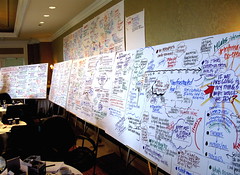 I learnt a lot about making connections when I was giving a presentation to an industry association conference in Osaka, Japan, a while back.
I learnt a lot about making connections when I was giving a presentation to an industry association conference in Osaka, Japan, a while back.
All presentations were being translated simultaneously between English and Japanese.
The Japanese take their responsibilities as hosts of such a major international conference very seriously and their natural formality made it very difficult to ascertain their true response to most presentations.
A single word made the connection
One speaker, however, completely broke through the audience reserve and generated smiles and murmurs of delight with a single word.
The word was “Konnichiwa“.
A simple “Hello” inexpertly pronounced, but in their own language, created a stronger connection than any number of words expertly translated.
Whether we are making a formal presentation, leading a team or serving a customer, the key to building a relationship is making a connection.
There won’t often be a single word which can make that connection but communicating from the other person’s perspective rather than your own will always produce better results in any of your business (or personal) relationships.

 Messages are conveyed in a wide range of ways, not just by our words. Any conflict between all these messages which are being conveyed simultaneously by different means will make it much more difficult to get your message across successfully. This becomes especially important if the organisation is involved in any crisis or controversy but it is also central to your marketing andpositioning strategy.
Messages are conveyed in a wide range of ways, not just by our words. Any conflict between all these messages which are being conveyed simultaneously by different means will make it much more difficult to get your message across successfully. This becomes especially important if the organisation is involved in any crisis or controversy but it is also central to your marketing andpositioning strategy.




